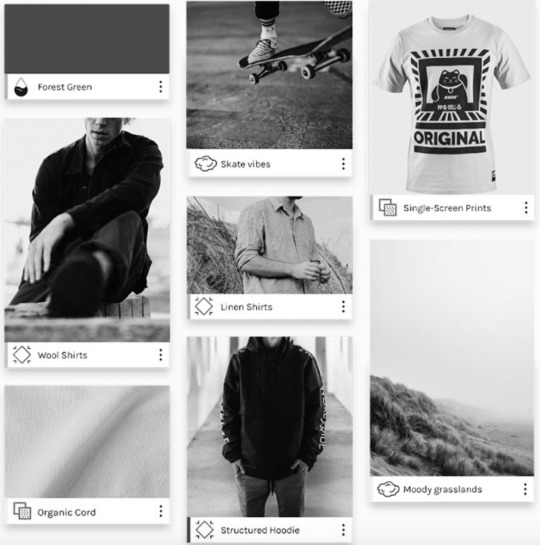Text
Digitalising the Supply Chain?
In a recent article on Forbes, explores the different ways in which designers are utilising digital tools and reaching out to local factories. Designers Steven Tai explaining how he used a lazy Susan to show a 360 degree view of his collection whilst designer Sonia Carrasco explains that her collections are produced in local factories which mostly live “month by month”. Carrasco continues to support these factories which is what she believes the whole industry should be doing.

Flora Davidson, a co-founder of SupplyCompass, a cloud-based platform that acts as the ‘digital middle-man’ between brands and their partner factories to handle all aspects of garment production.
SupplyCompass has connections with 200 factories in India, all of which have ceased production. Davidson is urging designers to use crucial digital tools: “Real-time collaborative design and product development software solutions, 3D digital clothing sampling and virtual fit sessions and digitization of tech packs to manage fit and material libraries for future collections.”
SupplyCompass claims to be the future of product development and production management for fashion brands and manufacturers and I think there will be much more recognition of these kinds of tools given the current crisis.
SupplyCompass have also recently launched a free tool which allows brands to create collection mood boards which can then be shared with others in a bid to help fashion brands collaborate around the globe. The concept is that ideas can be shared between teams as well as their factory partners and is said to be available for at least the next 6 months.
0 notes
Text
Charles Jeffrey’s Plans for the Future

I believe that the way in which brands conduct themselves in this period will be very telling of their ethics and values. Consequently, I think it says a lot about Charles Jeffrey that he’s making such an effort to maintain a consistent dialogue with his customers and project a sense of honesty and realness.
A number of sources in my research have declared that there will be some kind of sustainability boom in which we will see a rise in people making more informed purchasing decisions. If this is the case then I think that consumers will notice the designers who aim to foster positive change in the fashion cycle such as Charles Jeffrey.
In an article for Vogue, Jeffrey explains that “As designers we have to make stuff all the time, even if we’re creating things of beauty, we’re contributing to consumerism.” Jeffrey then goes on to explain that given how quickly the industry is adapting to change that the “prospect of creating one collection a year is not radical’.
In this article the designer explains his “yoghurt plan” which includes his team of 5 creating a jersey edit for June (in the event that his stockists require an inventory top up). Meanwhile “emergency” collections are pencilled in for September and January, should the shows go ahead as scheduled.
1 note
·
View note
Text
Charles Jeffrey’s Response to Covid-19
Unlike some other luxury brands, it appears that Charles Jeffrey has been very open in communicating his thoughts on the current industry landscape. Jeffrey has spoken about how he plans to progress in the future in a recent Vogue article where he questions if “this whole crisis will make us more mindful and aware of how we are all equal”.
Recently, Jeffrey has spoken on the Matches Fashion podcast as well as curating several Instagram posts which promote the designers recent collaboration. The commission is with photographer Wanda Martin to produce a shoot ‘All Tomorrow’s Parties’ inspired by wishful thinking in the current constraints which features the LOVERBOY garments available to buy on their site.

I think it’s brilliant that Jeffrey has been openly responding to Covid-19 through these different means and I believe this will be very crucial for maintaining his loyal fan base. Through my research I have noticed that a number of brands have chosen not to speak out about the current climate including how much it’s affecting their brand and the industry in general. I don't think that ceasing to address these issues or communicate with their customers will be good for sales and the future of these brands going forward.
According to the Vogue article, Jeffrey has been sending out tokens such as decorative necklaces from the spring/summer 2020 show which aren’t for sale simply because his followers “deserve it!” “People don’t usually think of the person behind a brand,” he says of the positive responses he has received. “It’s such a nice feeling for me to simply communicate with people without an agenda or a product to talk about.”
0 notes
Text
Digital Fashion Campaigns and Social Media
One of the more interesting developments in the fashion industry in response to the current climate appears to be digital fashion. In an increasingly digital age, it makes sense that brands would respond to Covid-19 with campaigns which utilise tools such as FaceTime, Instagram, Microsoft, digital art and live streaming etc. With Jacquemus creating a series of images showing their 2020 Spring collection on FaceTime with Bella Hadid and Milan fashion week going digital in July, there have been some interesting attempts made my designers to adapt to a new way of working.

One particularly interesting article which I came across on Forbes, explains how the recent digital campaign by Selfridges utilises 3D fashion design to “explore the future of fashion and retail”. The 3D digital fashion designer Cat Taylor has generated the new seasons collections into digital renders which link to the Selfridges eCommerce site.
The article progresses by explaining that we are already seeing a shift in consumer preferences in terms of ethics and that we will be seeing a rise in the number of people looking for “rarity” in their purchases rather than vast quantities of “stuff” (discounted products). Although, discounted products will still be required due to a global recession.
0 notes
Text
How Has Covid-19 Impacted the Fashion Industry?
There is no getting away from the fact that Covid-19 has had a crippling affect on the economy. Sadly, this includes the fashion industry which has been massively impacted with millions of artists, designers and seamstresses facing unemployment.
An article on CGTN explains that before the pandemic, the sales forecast for 2020 was looking promising due to the global fashion retail market experiencing a 14 percent increase to the previous year. Although, due to the Covid-19 crisis, we will see a change in not only sales figures but in customer behaviour, the fashion calendar and peoples style.
Some of the general changes:
An increase in online retail
A sustainability boom with customers being more considered with their purchasing habits and wanting to support ethical brands
Online streaming of fashion shows
Slower fashion with brands rethinking their industry habits
A general change in the way people dress
Tools such as SupplyCompass being implemented to help with supply chain solutions
I believe this crisis will change the fashion landscape in the future and will force both producers and consumers to face the crippling effects that the traditional fashion cycle is having on the environment. I hope the fashion industry will embrace a “slower” pace and that people will rethink their purchasing habits. It’s difficult to predict exactly what will happen going forward although I hope that there will be some positive changes in practice that can come from this awful crisis.
1 note
·
View note
Text
How Could Brands Respond to the Current Climate Through Social Media?
This post shows some innovative ways in which the non-binary queer-luxury fashion label, Art School or other brands could respond to the current climate through social media such as Facebook, Instagram and YouTube.
I feel as though YouTube would be a fantastic way in which brands could interact with their customers on a more personal level. This doesn't seem to be a tool that is utilised by many labels and I feel as though luxury brands should consider that if they are to get through to their customers, they must be more willing to sacrifice quality of posts and production in order to keep a flowing dialogue with their customer base.

0 notes
Text
Introduction
This blog will document my thoughts and feeling regarding the current climate and analysing ways in which fashion brands are altering their practices in a time of global lockdown. I will also be thinking about ways in which brands could promote themselves going forwards, how my own work is being affected and how the current climate is affecting key studio staff.
1 note
·
View note